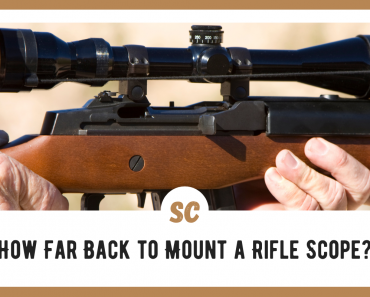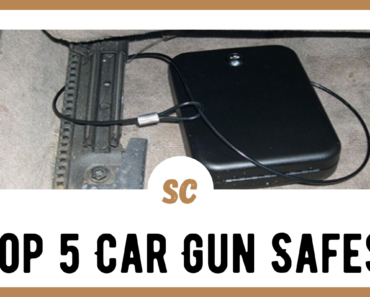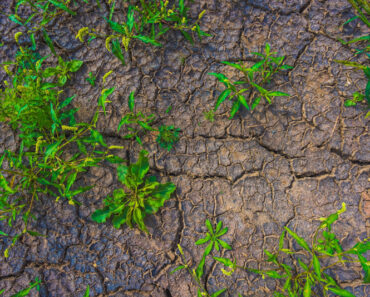According to various assessments, the majority of the population remains unprepared when faced with even a minor crisis. This becomes evident whenever a natural disaster or a situation caused by human actions affects a certain area. And to be honest, you don’t need statistics to tell you this, and you’ve probably seen it firsthand when the COVID pandemic hit.
As the last-minute panic ensues, it takes merely a few hours for the shelves of local grocery stores and convenience shops to be completely stripped of emergency provisions. In fact, everything people assume would be useful to their survival will vanish in no time. The most “desired” items, as we’ve all seen, are non-perishable foods, bottled water, and various comfort items.
Even gas stations suffer a similar fate, with anxious drivers enduring long queues in a desperate attempt to fill up their tanks. And big box stores are not spared either since these are seen as cornucopia by many and are their first target when the brown stuff hits the fan.
Those who are prepared observe these frenzied spectacles with disbelief and astonishment from the comfort of their own homes.
But why is that?
It’s because preppers and survivalists possess a well-thought-out plan and ample supplies and usually emphasize acquiring the skills that might one day save their lives.
However, is that truly enough?
Imagine a crisis striking while you are away from home or if circumstances lead to your separation from your main stockpile.
Do you have a backup plan?
What would you do then?
After meticulous planning and accumulation of resources, the unexpected loss of your primary supply source could put you at a significant disadvantage. If only you didn’t put all your eggs in one basket. Now, don’t get me wrong, dividing your resources doesn’t have to be complicated, and you just need to make sure there are some fundamental items to give you a fighting chance.
Let’s explore the numerous reasons why you should seriously consider having a secret stash, or perhaps even multiple ones.
What is the concept of a hidden stash?
A concealed reserve, also known as a survival cache, refers to a collection of provisions, equipment, and other vital items that are discreetly and securely stored in strategically advantageous locations for future retrieval and use. Think of it as insurance for your prepping plans.
The underlying principle is this: there are supplies that may become crucial for your survival one day. By placing these items inside a container and concealing that container in a carefully selected and secure spot, you ensure that you have options when and where they are most needed.
Why is a secret stash necessary during a crisis?
Those of us who prioritize preparedness don’t leave anything to chance. We invest significant effort into research, risk assessment, and exploring different options. We make our own survival plans, put them to the test, and continually refine our preparations and skills as circumstances evolve or when we identify opportunities for improvement.
We learned to recognize that knowledge and skills will always hold greater importance than material possessions, and we consistently seek ways to expand our knowledge base.
However, imagine for a moment that all the supplies you have so meticulously gathered were somehow lost or rendered inaccessible. While you still retain your knowledge and skills, as they cannot be taken away from you, would your survival plan remain viable without those essential supplies?
Having a secret stash of survival items out there is a means to ensure you have a fallback position. In moments of desperation, a well-placed survival cache may very well be the only thing that saves your life. It is not difficult to imagine the countless scenarios where you may one day be immensely grateful to possess a survival cache.
The secret stash or survival cache
Imagine if you had the unique ability to glimpse into the future and see the disaster that will affect your living area. Would you leave yourself a preparedness package? What items would you include, and where would you choose to conceal it?
Each situation presents its own unique circumstances, and it is crucial to meticulously assess our individual needs when making preparations. However, certain broad categories consistently overlap due to logic and reason, and that’s why you find somehow the same needs, regardless of the SHTF scenario you are prepping for. In virtually any survival scenario, the essentials encompass water, food, shelter, security, first aid, and medical supplies.
While having these fundamental supplies is undoubtedly valuable, it is even wiser to think beyond the basics. This entails incorporating reliable modes of transportation, fuel reserves, communication tools, and defense measures into your planning. All of these items can be included in your preparations and strategically cached. The goal is to anticipate your specific requirements and pre-position supplies and equipment to address those needs.
Containers for concealment
There is an array of options available when it comes to cache containers. In fact, I believe that, to a certain extent, almost any container can serve its purpose as long as it is appropriate for the specific circumstances and environment. Now, if you bury your supplies in a plastic bag in a damp environment, don’t expect the items inside that bag to remain dry for long. Ideally, your cache container should be able to withstand moisture and extreme temperatures, but also rodents and insects.
Here are some suggestions to get you started:
The #1 choice for many preppers – Plastic storage buckets
These buckets are cost-effective, waterproof, durable, and easily accessible, making them the preferred choice for many preppers. Some folks may even be fortunate enough to obtain some for free from local restaurants or grocery stores.
When using plastic storage buckets, keep in mind that you should avoid any buckets that previously held hazardous chemicals or toxic substances. Instead, stick with those that were previously used for storing food products since these are the safest options available.
Now, the bucket itself is a pretty sturdy container, but you need to provide an added layer of protection, and this means that you need to use airtight lids. Even so, I can tell you from experience that it’s not recommended to put all your trust in the lids, and you should also consider using a five-gallon Mylar bag for added protection. Heat-seal the bag before closing the bucket, and you should have a pretty decent cache.
Ammo cans
For a more “professional” cache container, I recommend using ammo cans. Here you have two options, and you can use the steel or plastic ammo cans for your secret stash. Both choices come in various sizes and are equipped with rubber seals to ensure the contents remain clean, dry, and protected from the elements.
The steel ammo cans are sturdy and have great airtight and watertight properties, as well as the ability to be securely locked. However, keep in mind that prolonged exposure to wet conditions may lead to corrosion.
The plastic ammo cans, while similar to their steel cousins, are not as durable or robust. They are, however, lightweight and rust-resistant. These are also cheaper options and are a great choice for those working with a limited budget.
Regardless of the option you pick for your secret stash, make sure to secure contents that have been placed within using a Mylar bag, providing an additional layer of protection.
PVC pipes
For the handyman and pretty much anyone with enough curiosity and patience to build stuff on their own, the PVC cache remains king. I’ve built many survival caches over the years, including some for geocaching using PVC pipes with appropriate fittings. Everything you need can be readily found at your local hardware store, all for under $50.
A general note about mylar bags: Some folks will choose to use mylar bags as their cache containers, and this can be a proper choice, especially if you live in arid environments. However, even if these bags are versatile, they are not puncture-proof, and you need to pick a bag that is at least 4.0 mil thick to make sure it’s sturdy enough. Also, if you decide to store food items in mylar bags, it’s highly recommended to use oxygen absorbers. I, for one, never use just mylar bags for caches, and I usually place these in plastic or metal containers.
When picking a container for your secret stash, remember that it’s key to assess your specific circumstances, anticipate your needs, and choose cache containers that offer maximum protection and security for your supplies. With careful planning and implementation, you can create a hidden reserve that will prove invaluable when faced with unforeseen challenges.
How to make a cache container
If you’re looking to craft a straightforward and watertight cache container, using a PVC pipe is the way to go. It is an excellent choice. And all the necessary components can be found at your local home supply or hardware store.
Here’s what you’ll need for your cache:
- A two-foot section of 4” diameter PVC pipe.
- A 4” diameter PVC pipe cap.
- A 4” diameter PVC pipe threaded clean-out plug.
- Some PVC pipe cleaner and cement.
- Spray paint of your choice.
Follow these directions to assemble your cache container:
- First, you will need to pre-assemble all the pieces to ensure they fit together as intended. Lightly sand the inside of the PVC surfaces to be joined, and wipe them clean. Apply PVC cleaner to the surfaces and allow them to dry.
- Next, follow the instructions provided by the PVC cement manufacturer to apply the cement and join the individual pieces together one at a time. Avoid applying any cement to the threads of the clean-out plug because it would be difficult to access the items inside the pipe if you do so. Set the container aside to dry.
- Once dried, you can paint the container with spray paint for added camouflage and protection. The color and pattern you choose for the container should match the environment where you plan to stash it.
What should you include in your secret stash?
As I said previously, what you store in the survival cache depends on your needs, and it’s a matter of personal preference for many. Some may decide to store firearms, extra magazines, and ammunition, while others will go for prescription medication and glasses. I have a cache with a knife and small multi-purpose tools, but I also have a few others with MREs, maps and compass, paracord, and other items that would help me survive in the wilderness without stressing too much about it.
By carefully assembling your cache container and thoughtfully selecting the items to include, you’ll be better prepared to face unforeseen challenges and emergencies with confidence.
Where should you hide your cache?
For many folks out there, this is the most difficult aspect of survival caching, and finding the perfect storage location for your cache is not easy. The location is just as crucial as selecting the appropriate container, and this endeavor is even more challenging in urban environments.
Contrary to common belief, a cache doesn’t necessarily need to be buried to be well concealed, and you can often hide it in plain sight. In fact, I know from my army buddies that some of the caches their fellow brothers fail to notice were hidden above their heads in trees or other inconspicuous locations.
Consider the following suggestions when planning to hide your cache:
- Natural concealment: Take advantage of natural features in your environment to conceal your cache. Look for areas such as dense foliage, hollowed tree trunks, or rock formations that can provide natural camouflage. Ensure that these locations are not easily noticeable and remain undisturbed by regular human activity. In the wilderness, there are many such locations that would help you conceal your caches, and you just need time and patience while prospecting.
- In plain sight: Sometimes, the best way to hide something is right in front of everyone. Disguise your cache as something inconspicuous, allowing you to effectively hide your supplies while maintaining easy access and retrieval. For example, you could paint your PVC pipe to look like a log and store it with your firewood. Unless there is someone looking for free firewood, the cache should remain safe and undisturbed for a while
- In isolated areas: While this is usually an option for the wilderness, it can still work in urban environments where entire neighborhoods are abandoned. Seek out less-traveled but still accessible areas to hide your cache.
- Underground utility access points: Many urban and suburban areas have underground utility access points, such as utility boxes or manholes. These locations often blend in with the surroundings and may not attract much attention. By carefully securing your cache within one of these access points and painting the containers accordingly, you can take advantage of the existing infrastructure while maintaining easy access to your supplies.
A final word
Creating a well-planned survival cache requires careful planning, time, and effort. However, the potential benefits can be significant, and I find survival caches to be effective backups in case you cannot reach your base camp or the supplies you’ve stored at home.
Analyze your specific needs and identify items that address those needs effectively. Be creative and explore all available options for placement and retrieval. By being thorough and imaginative in your cache preparations, you’ll enhance your preparedness for unforeseen challenges and emergencies.







![Govt. Overreach, Lockdowns, and WW3 [PODCAST] Govt. Overreach, Lockdowns, and WW3 [PODCAST]](https://survivalcove.com/wp-content/uploads/2021/11/survival-preppers-podcast-banner-370x297.jpg)



















